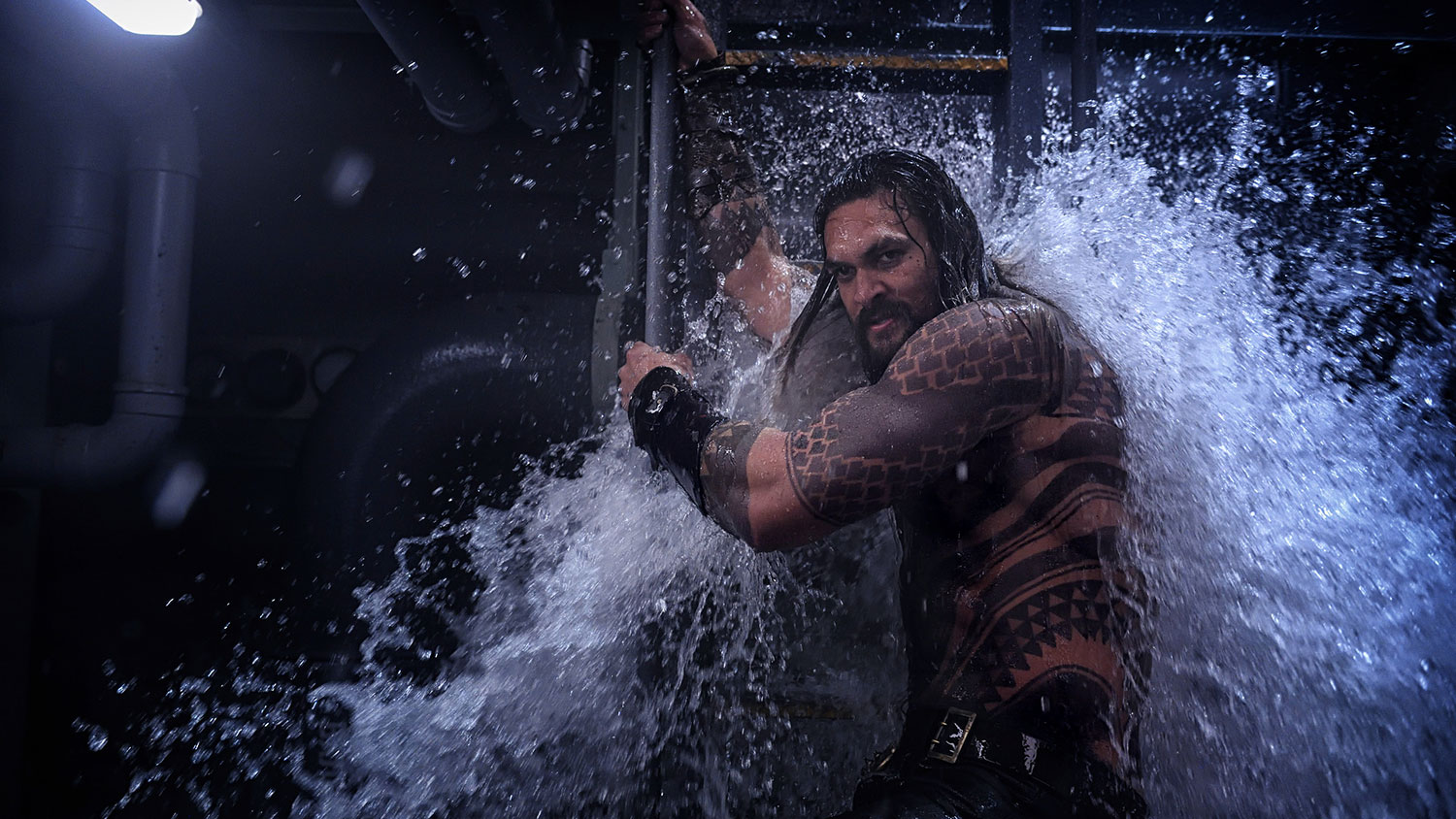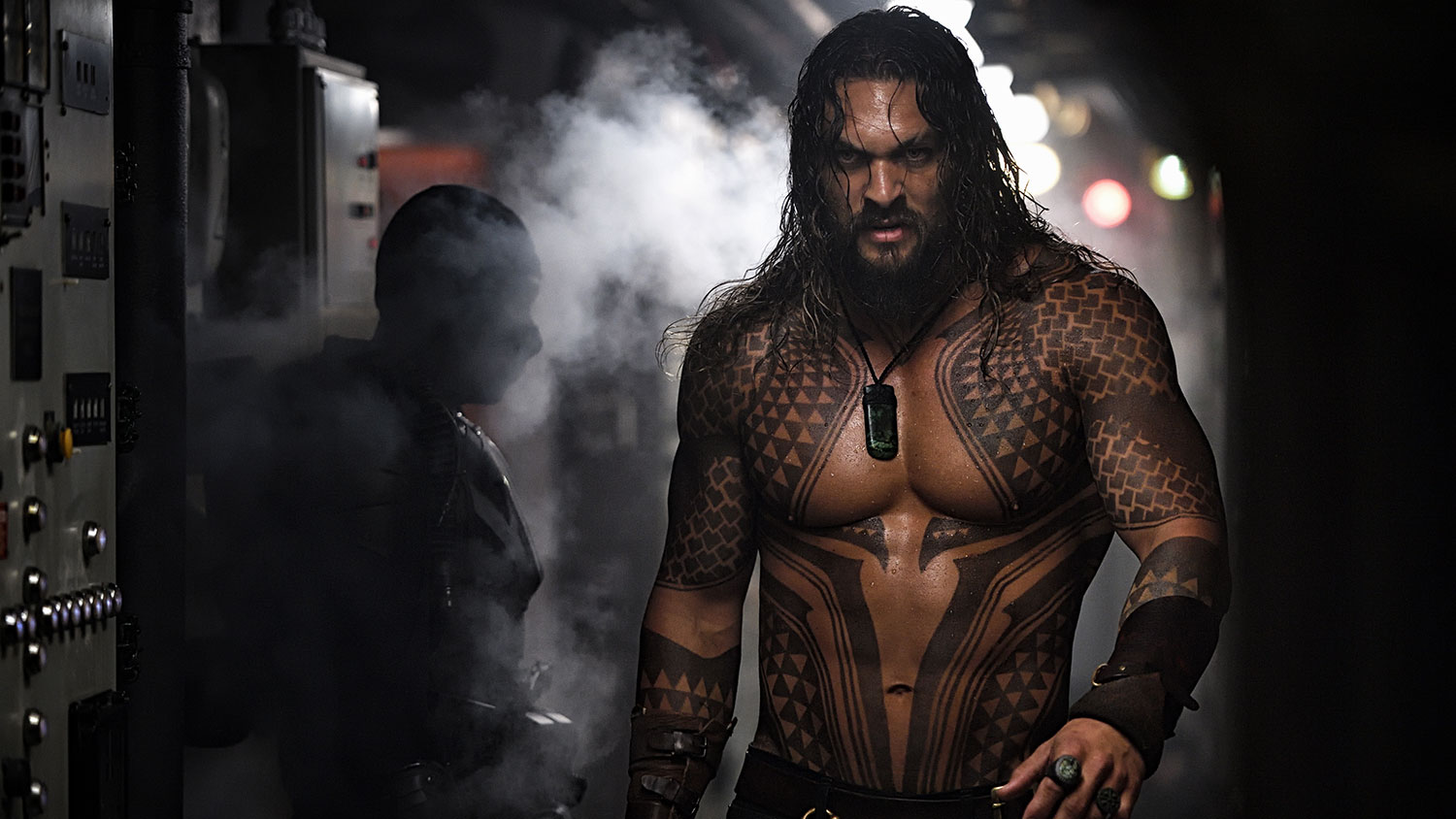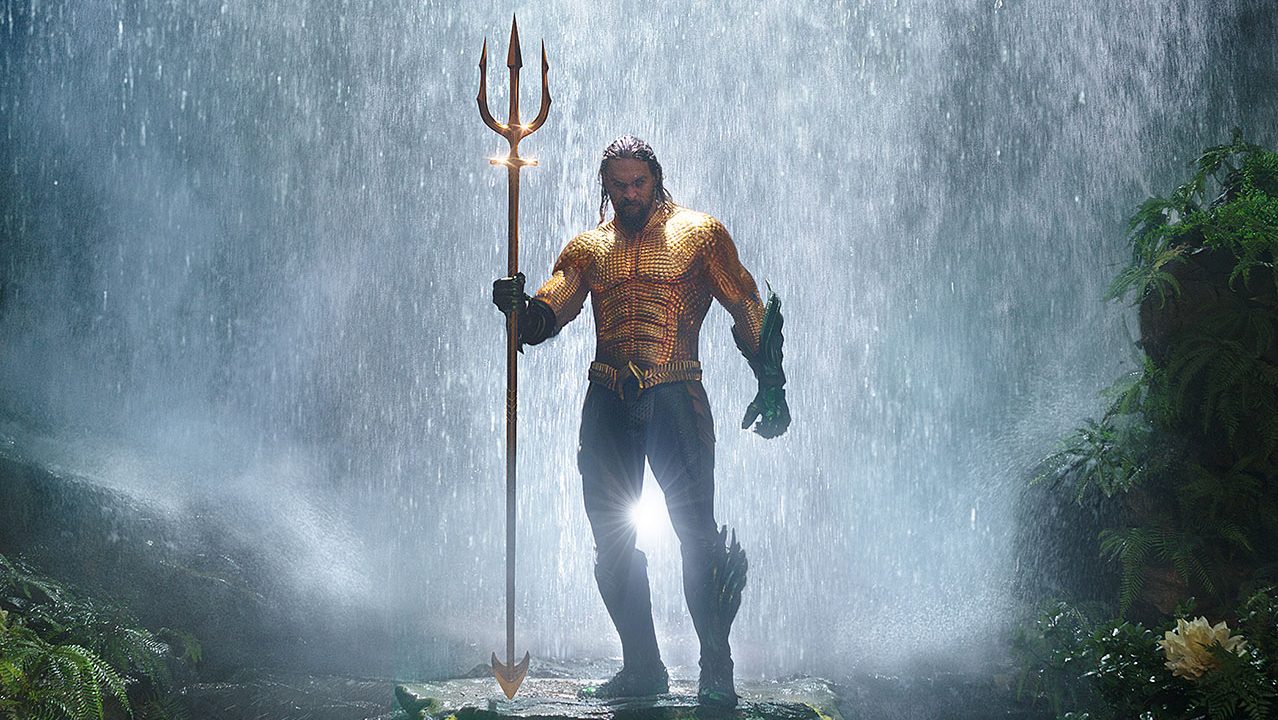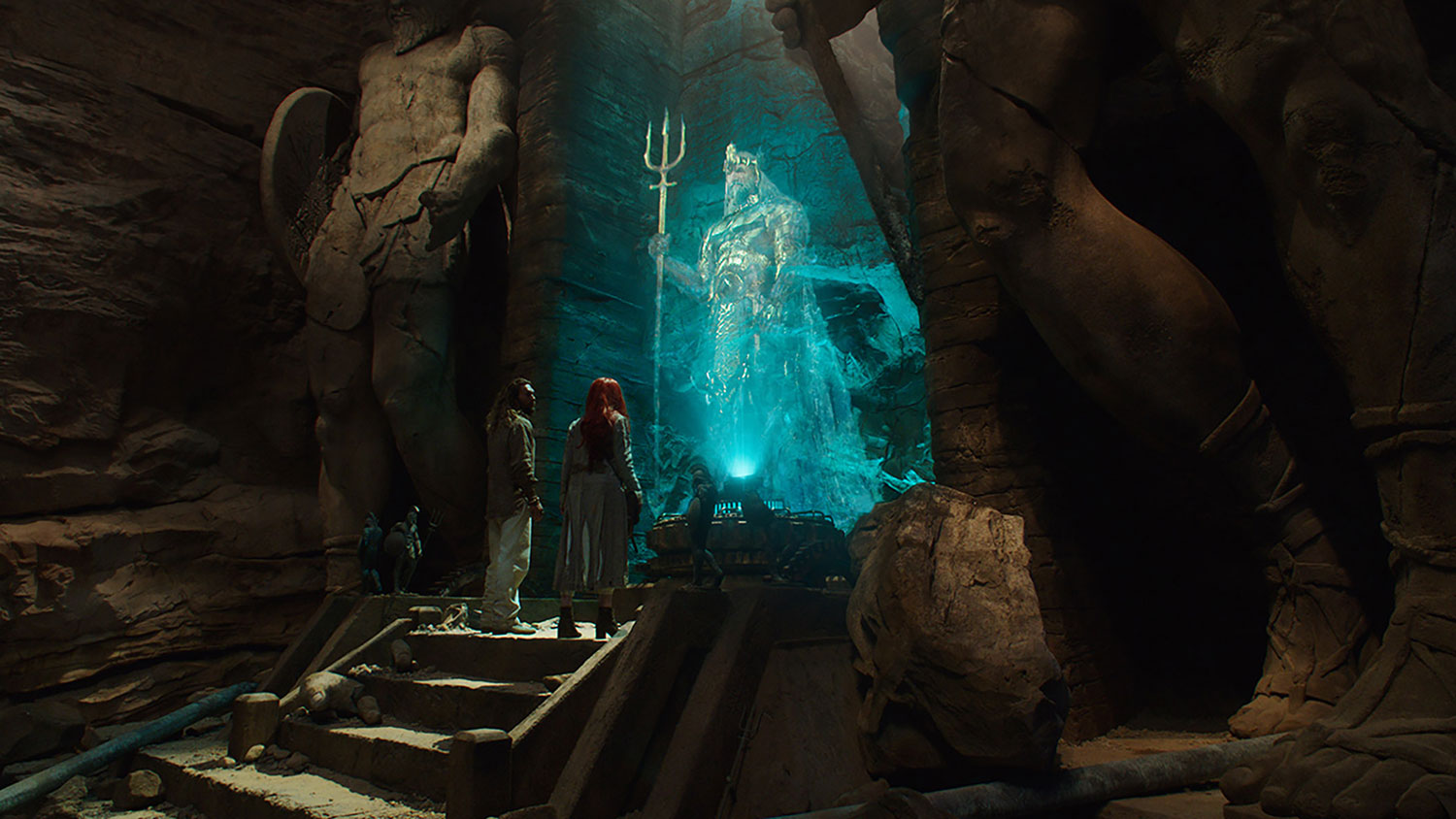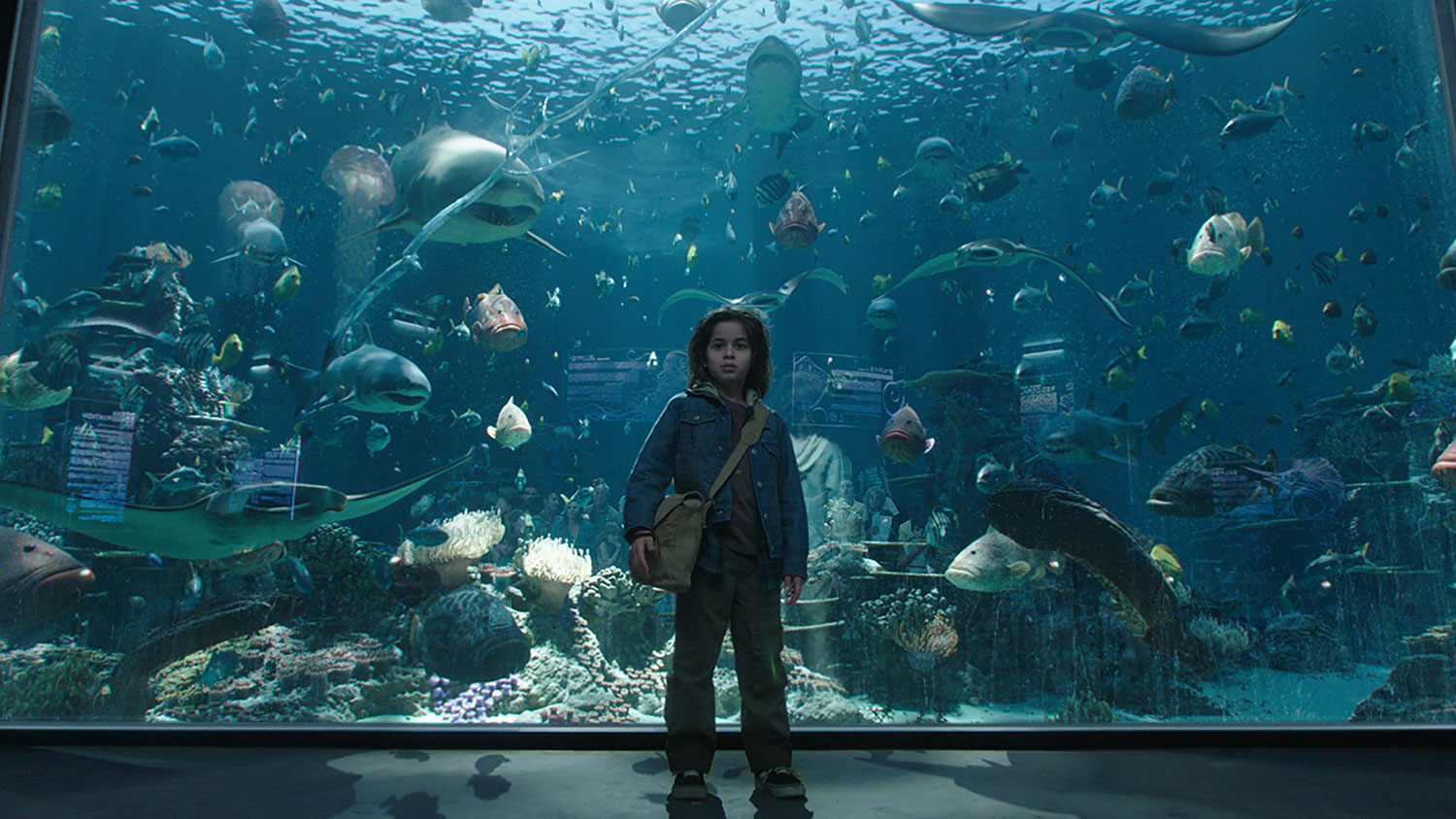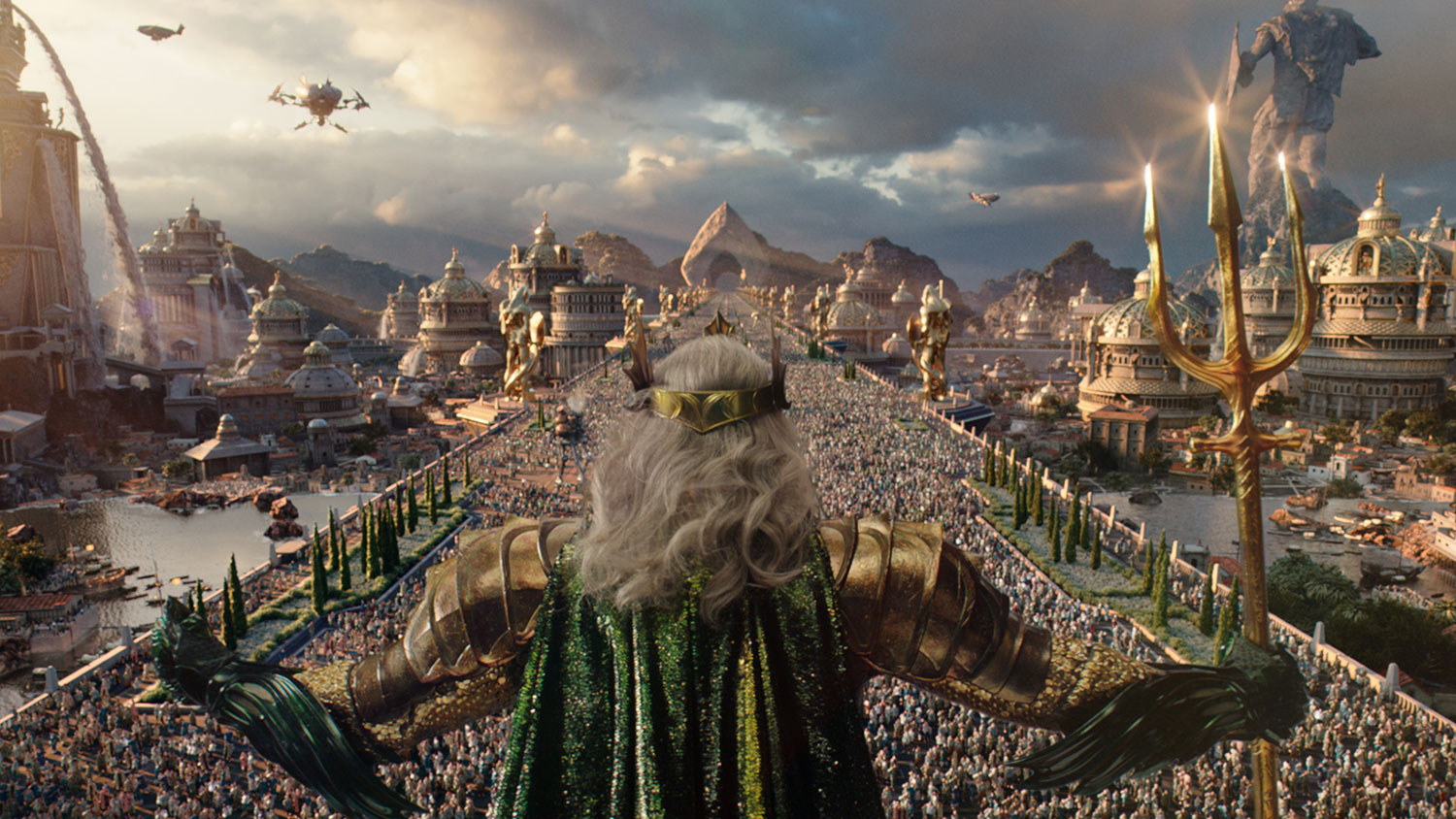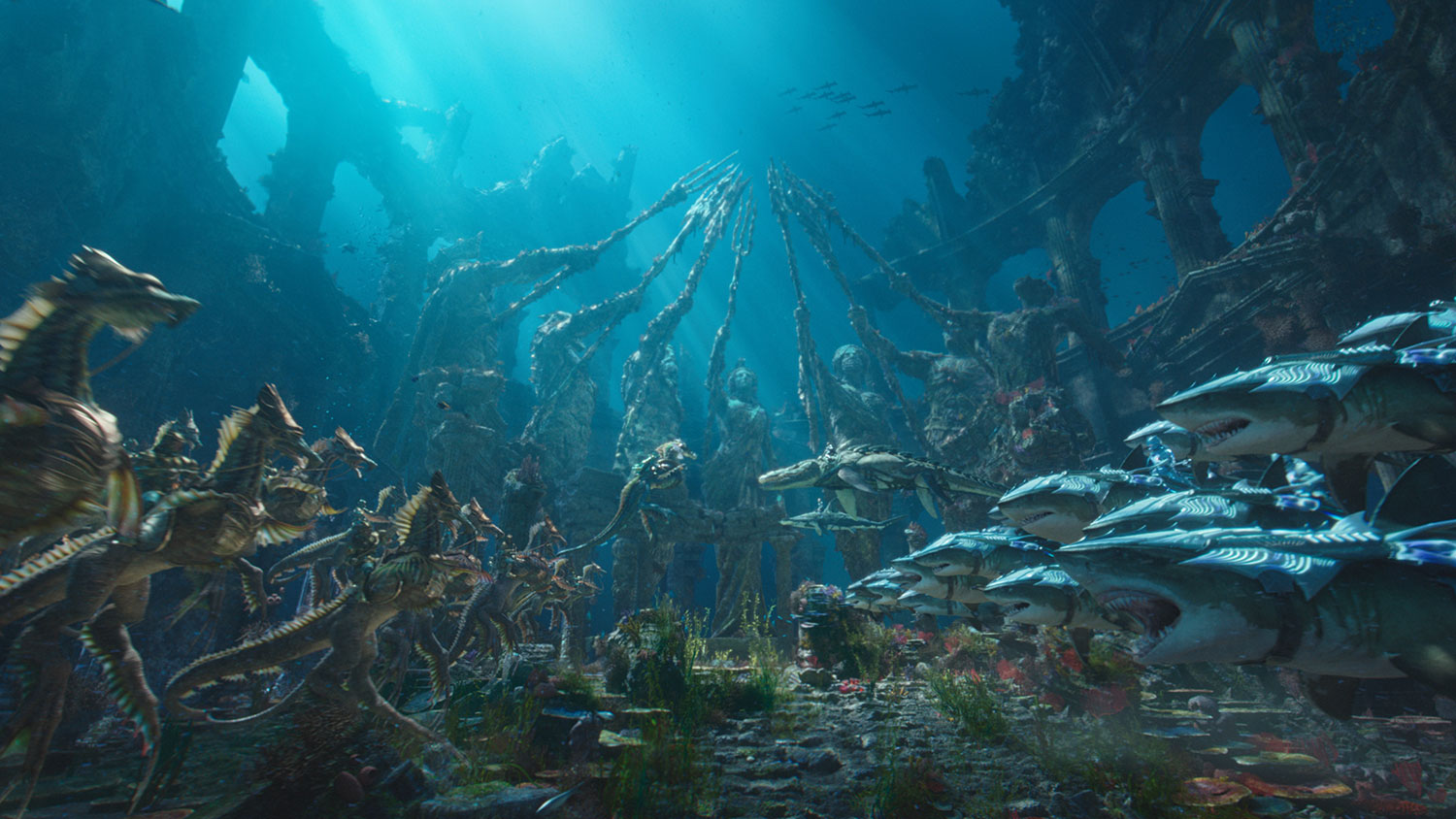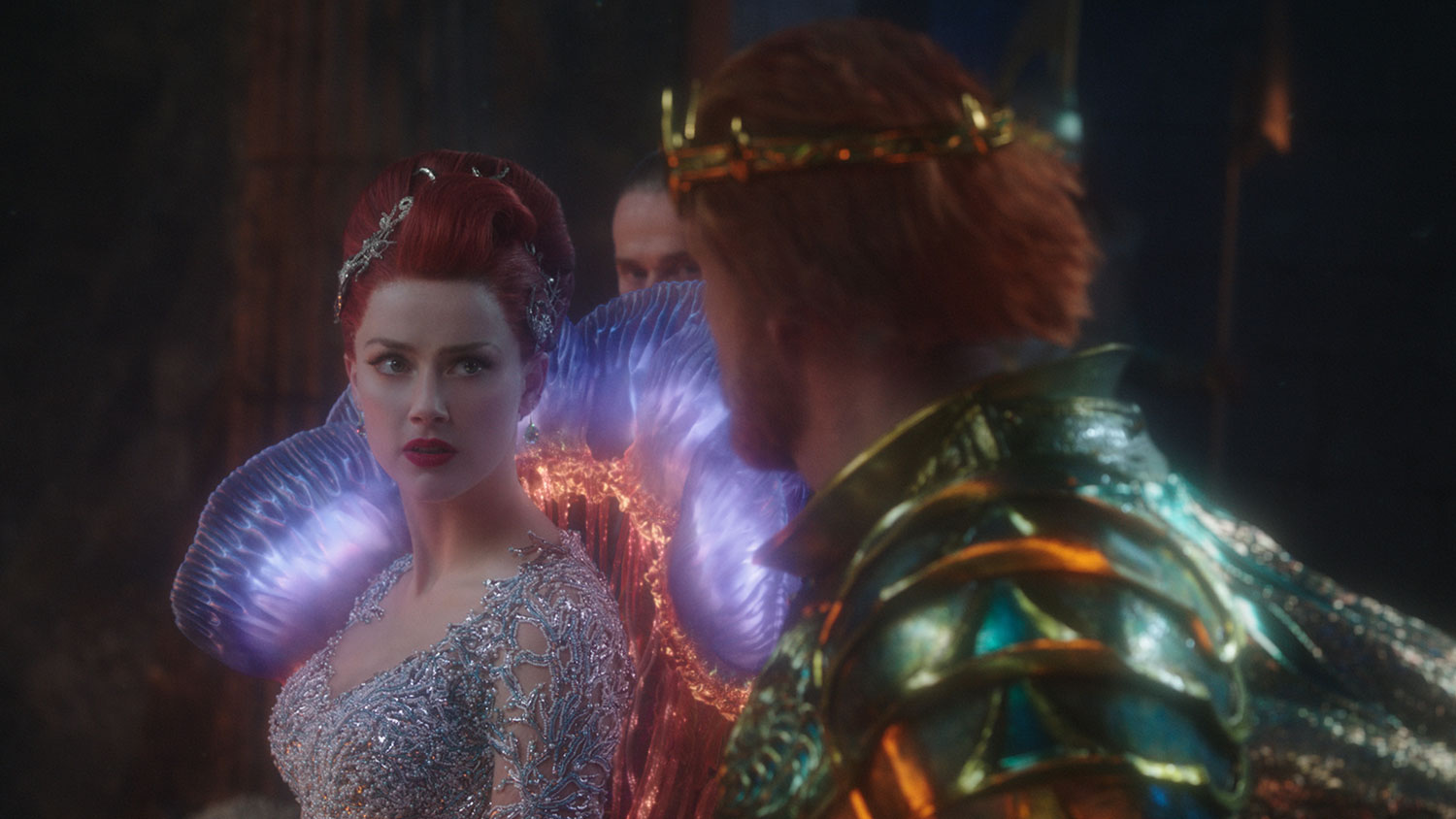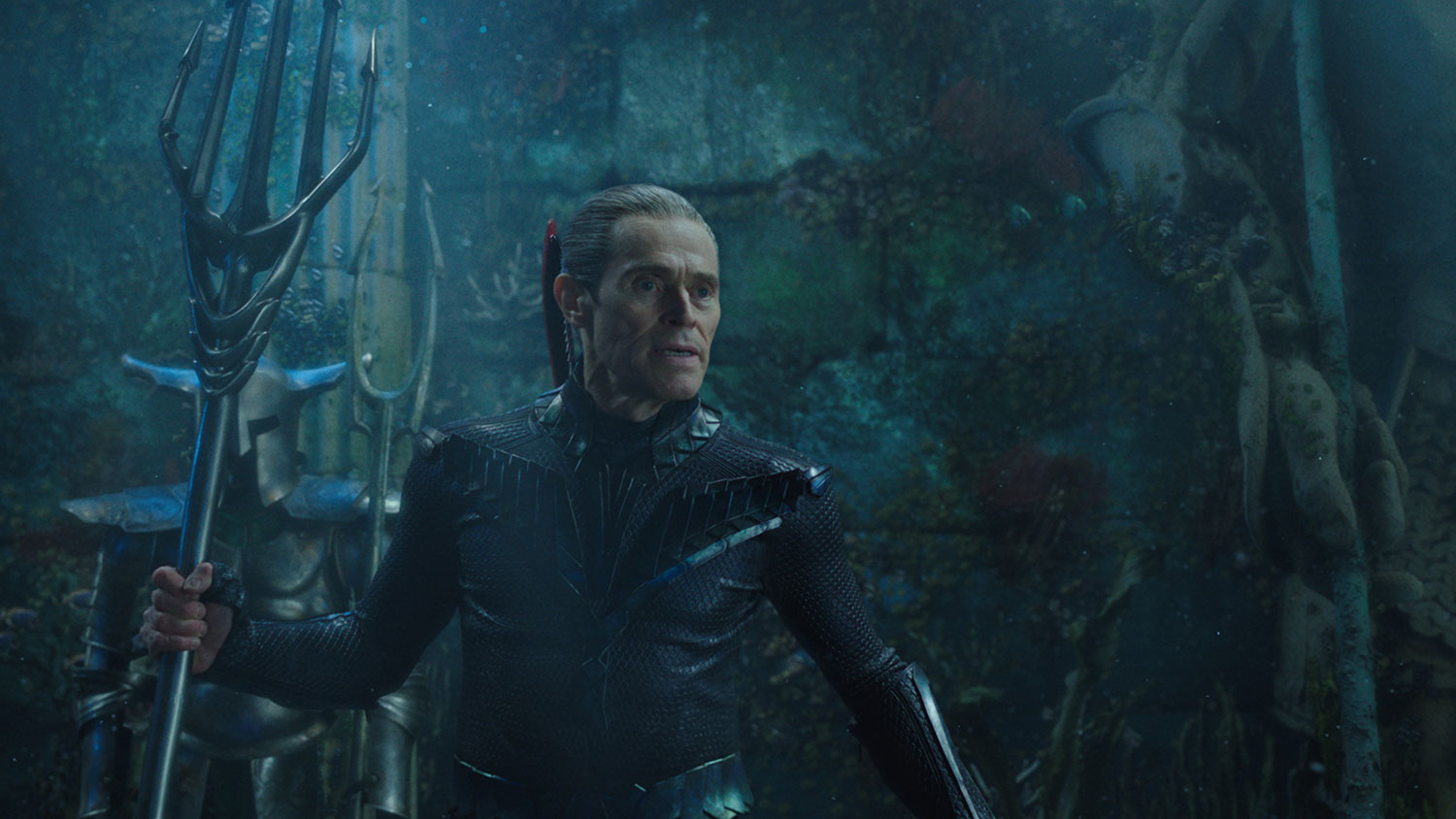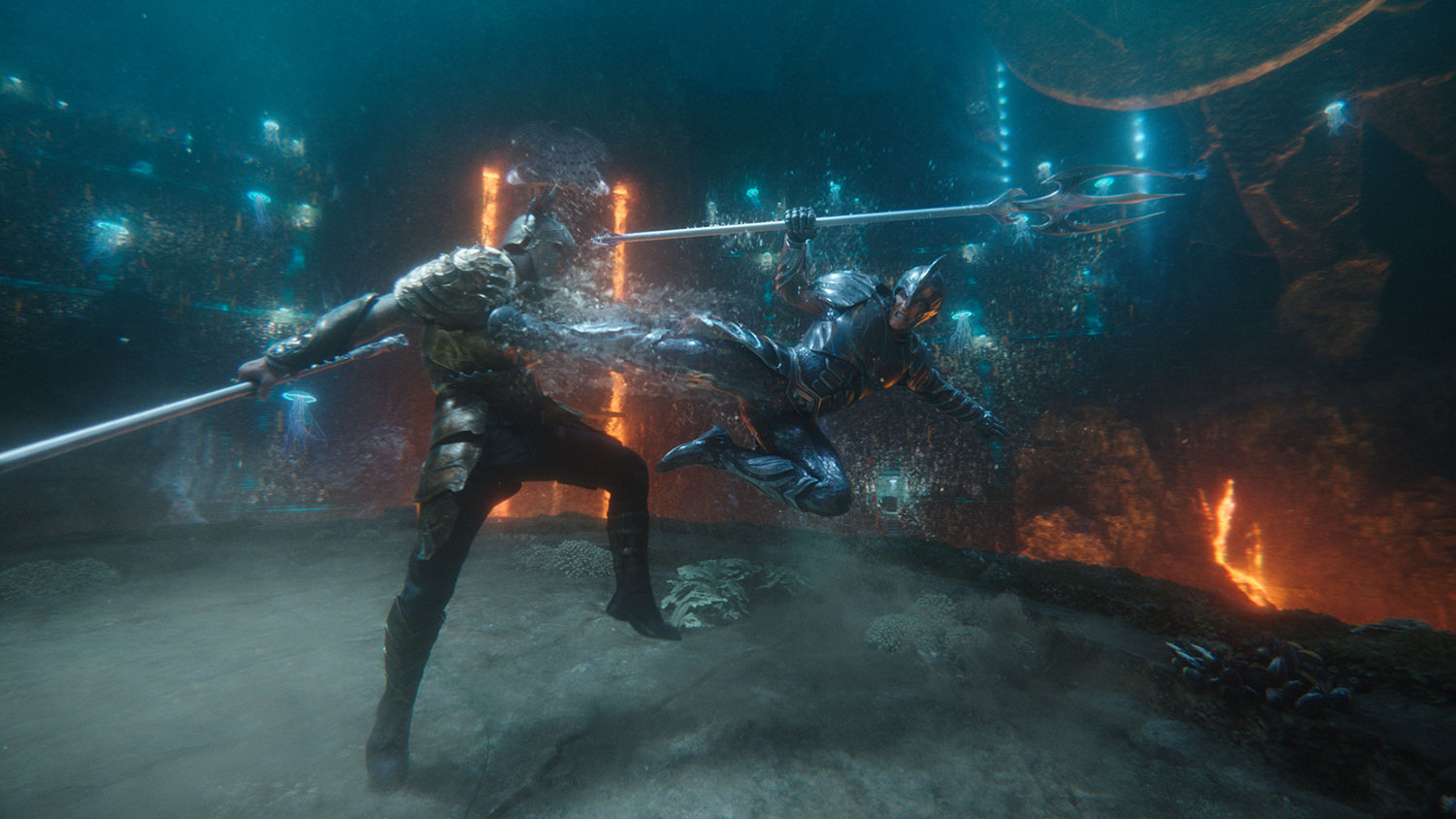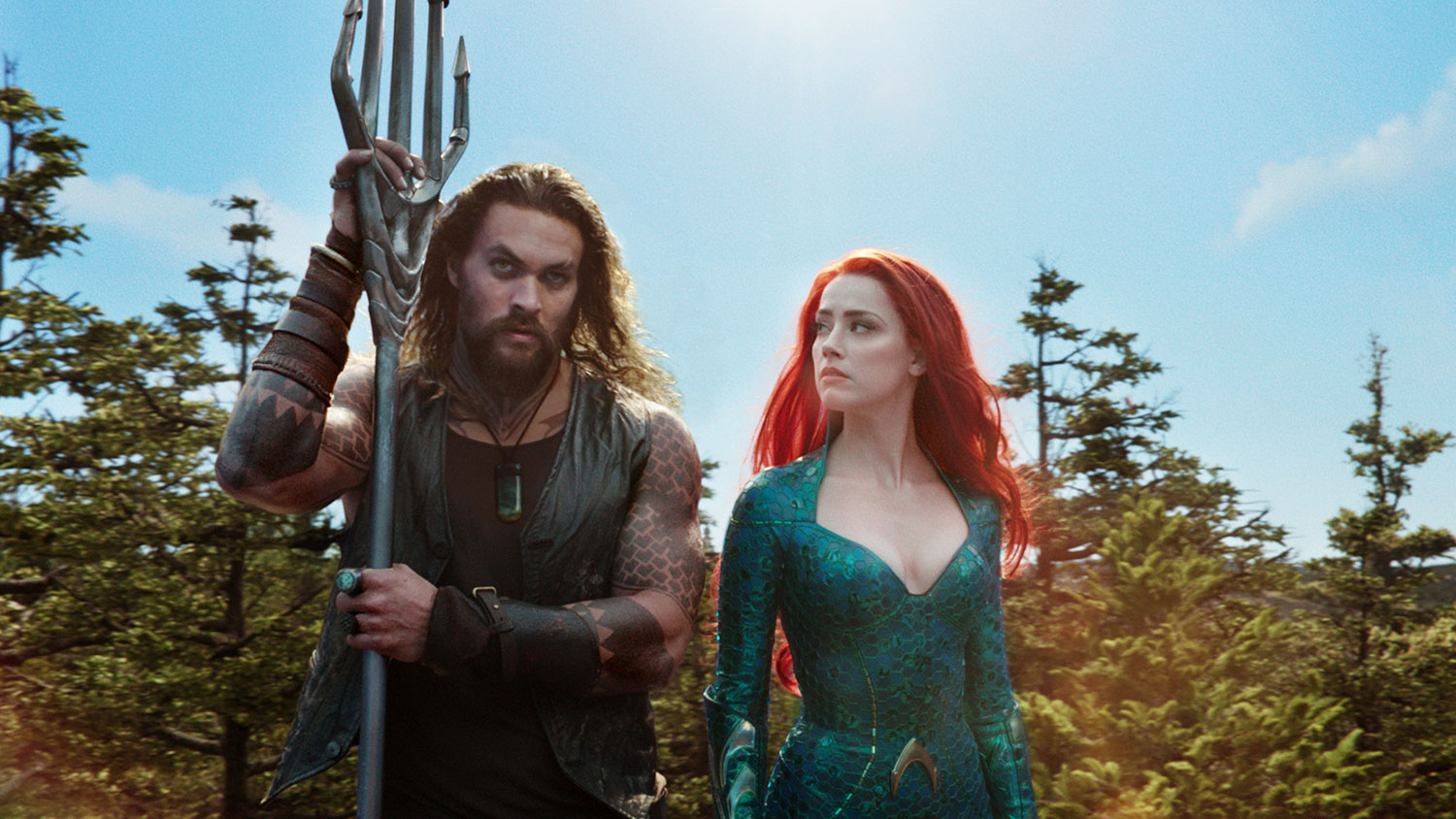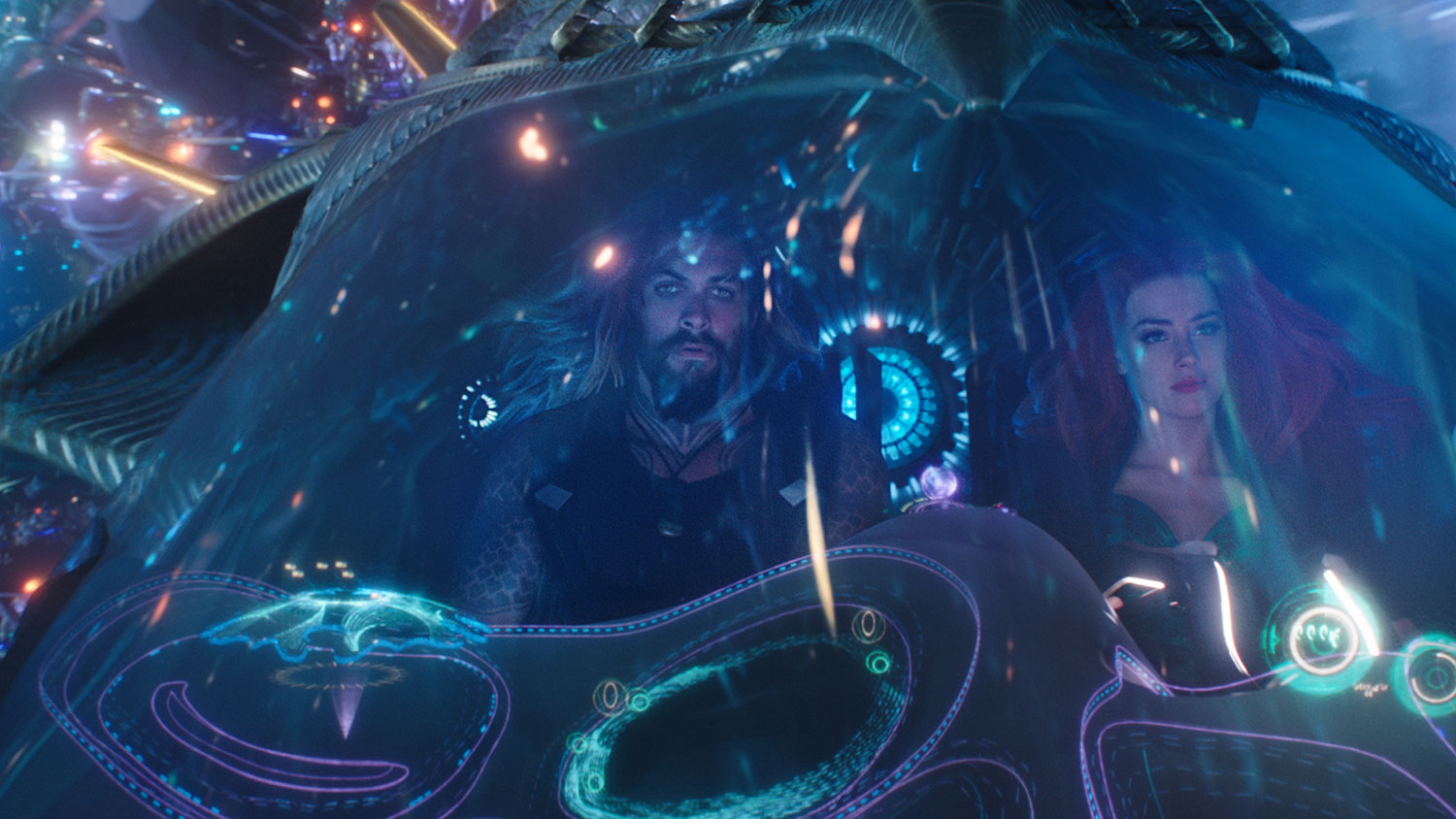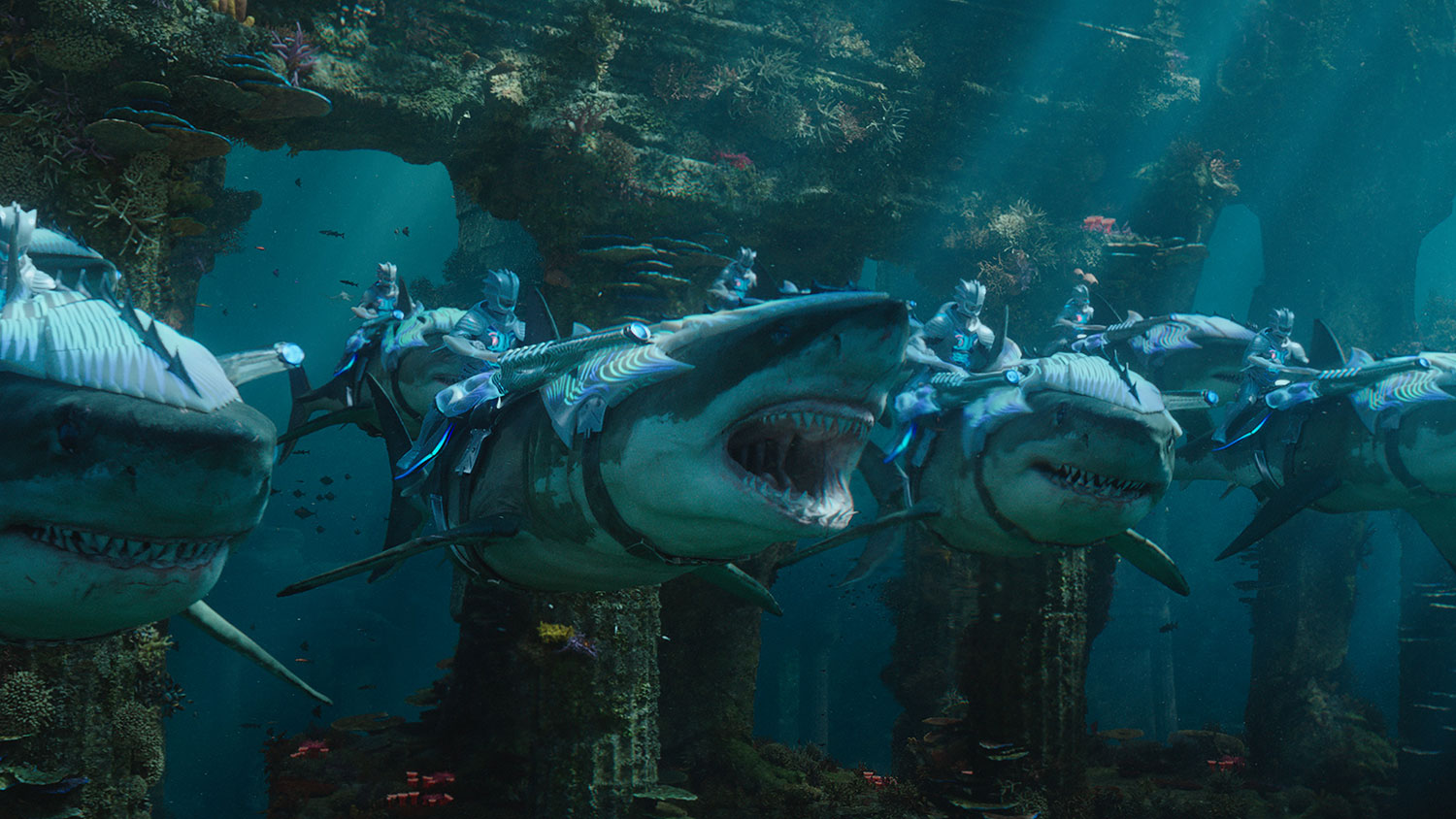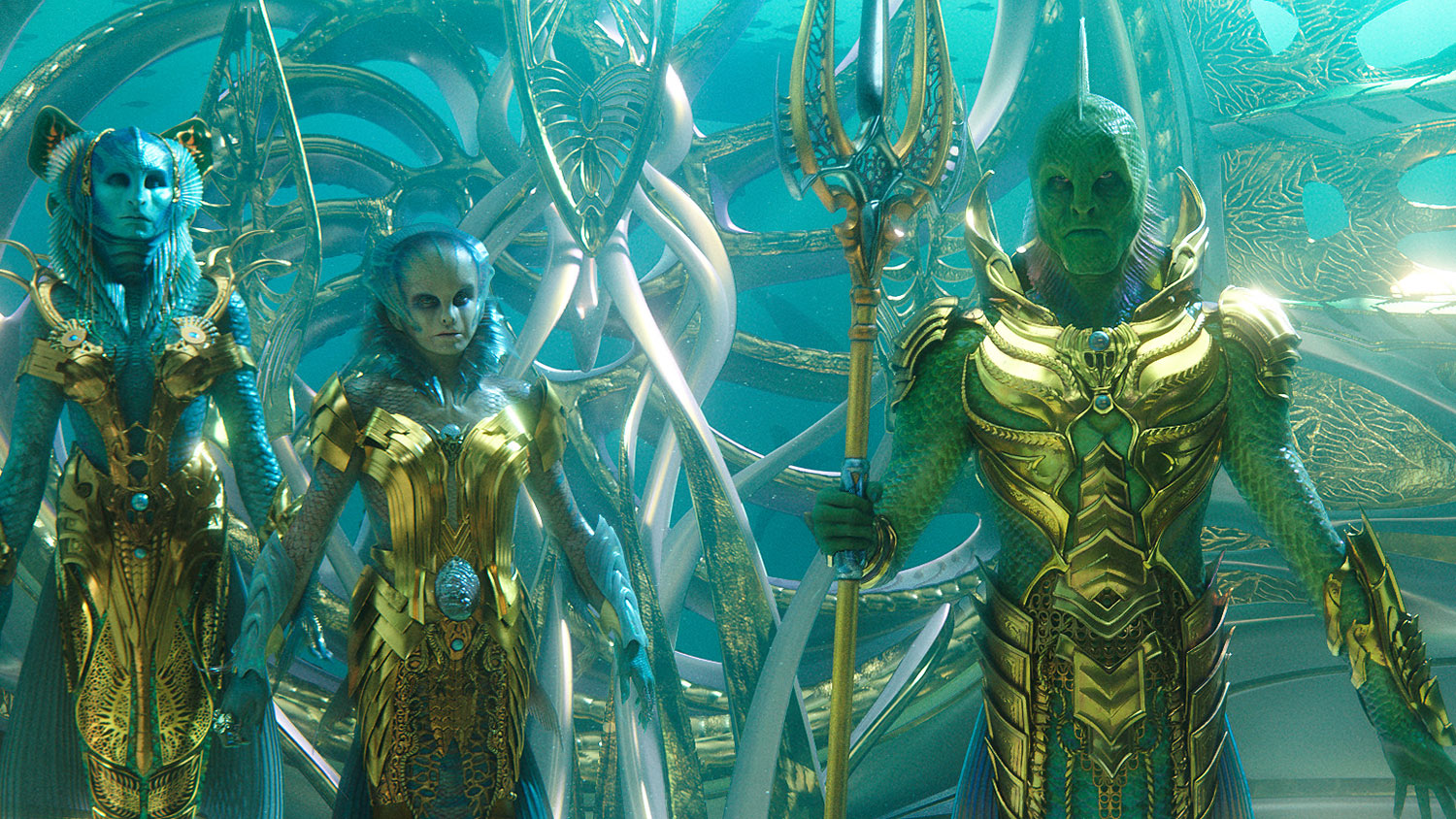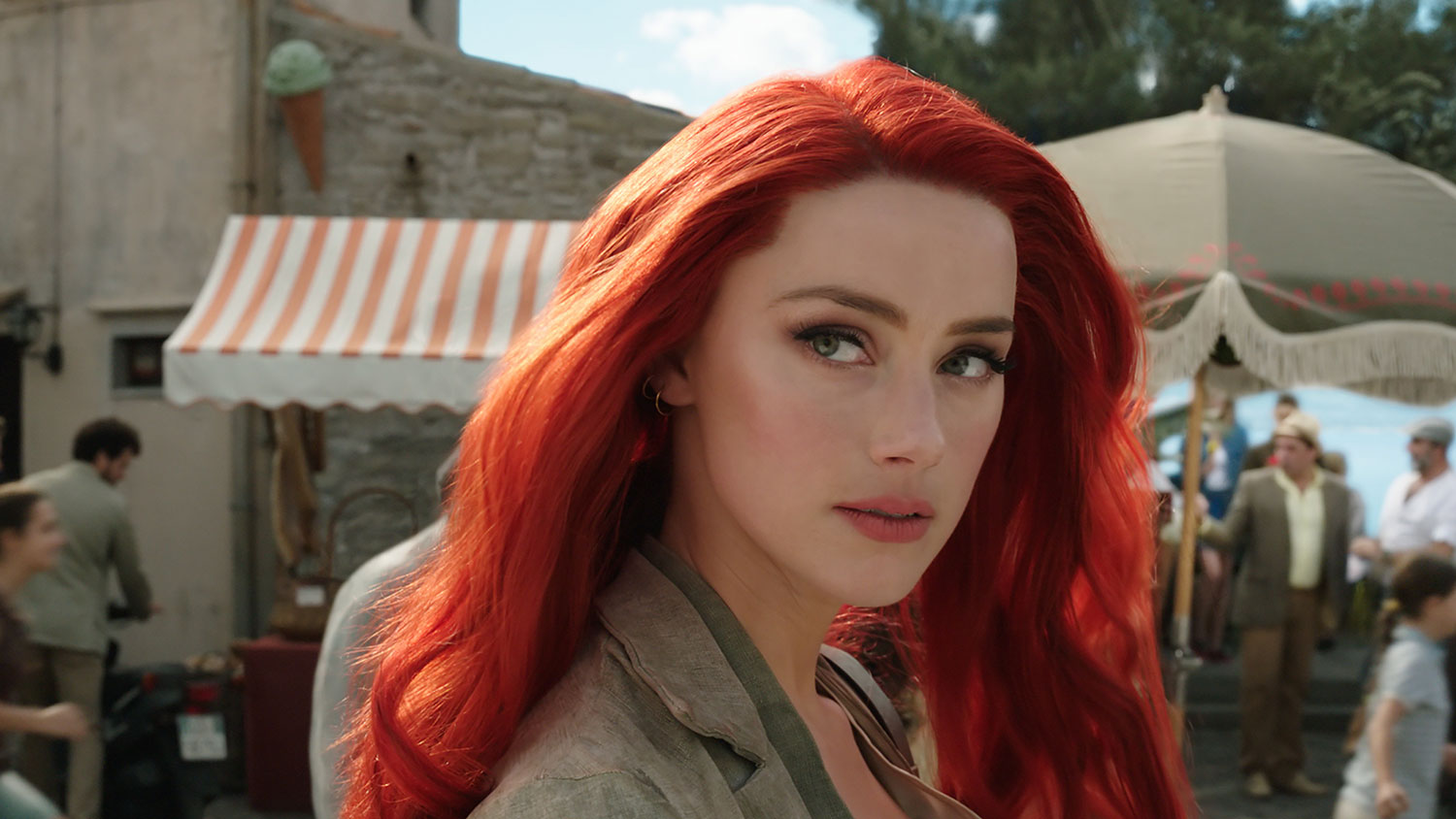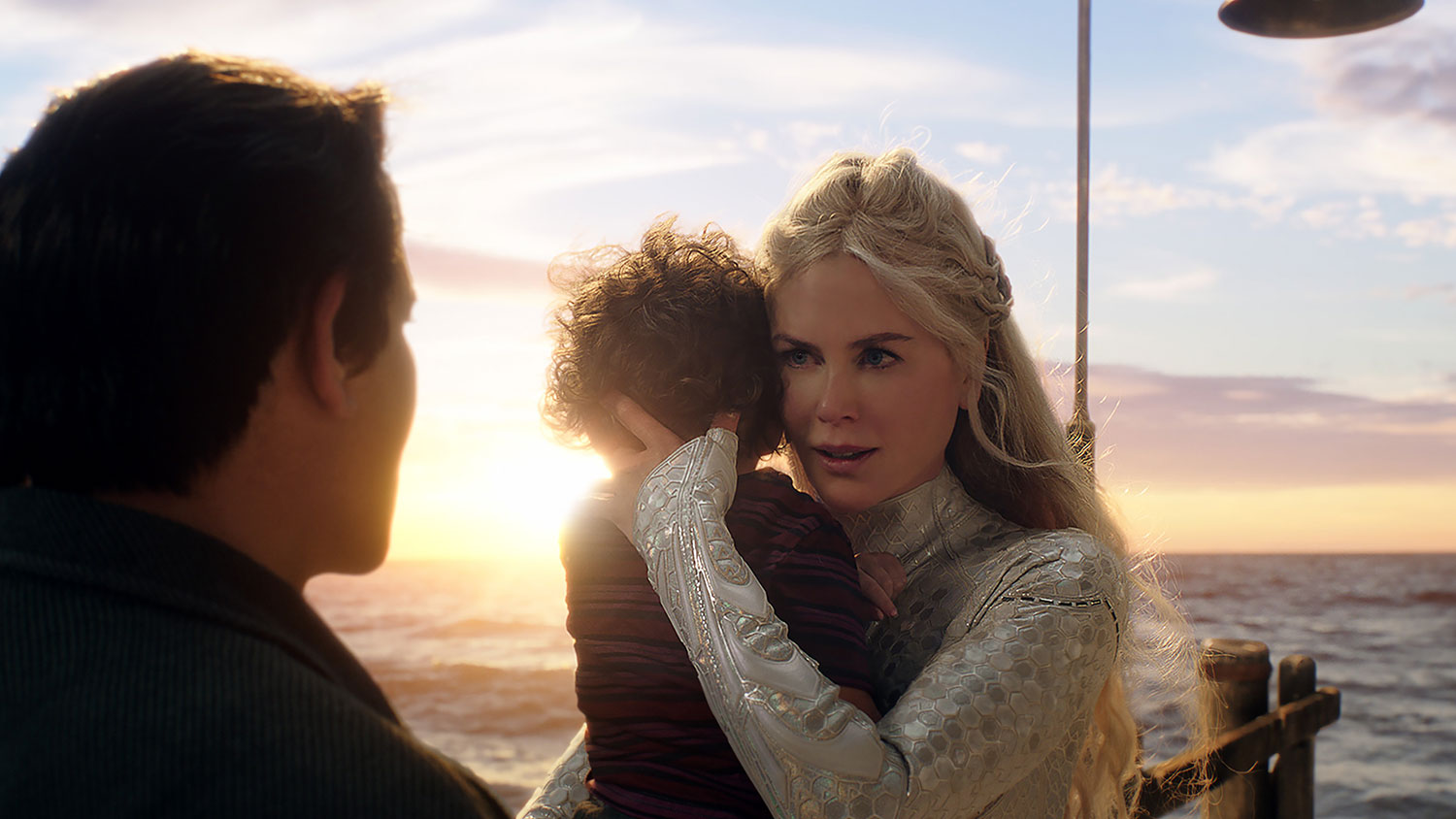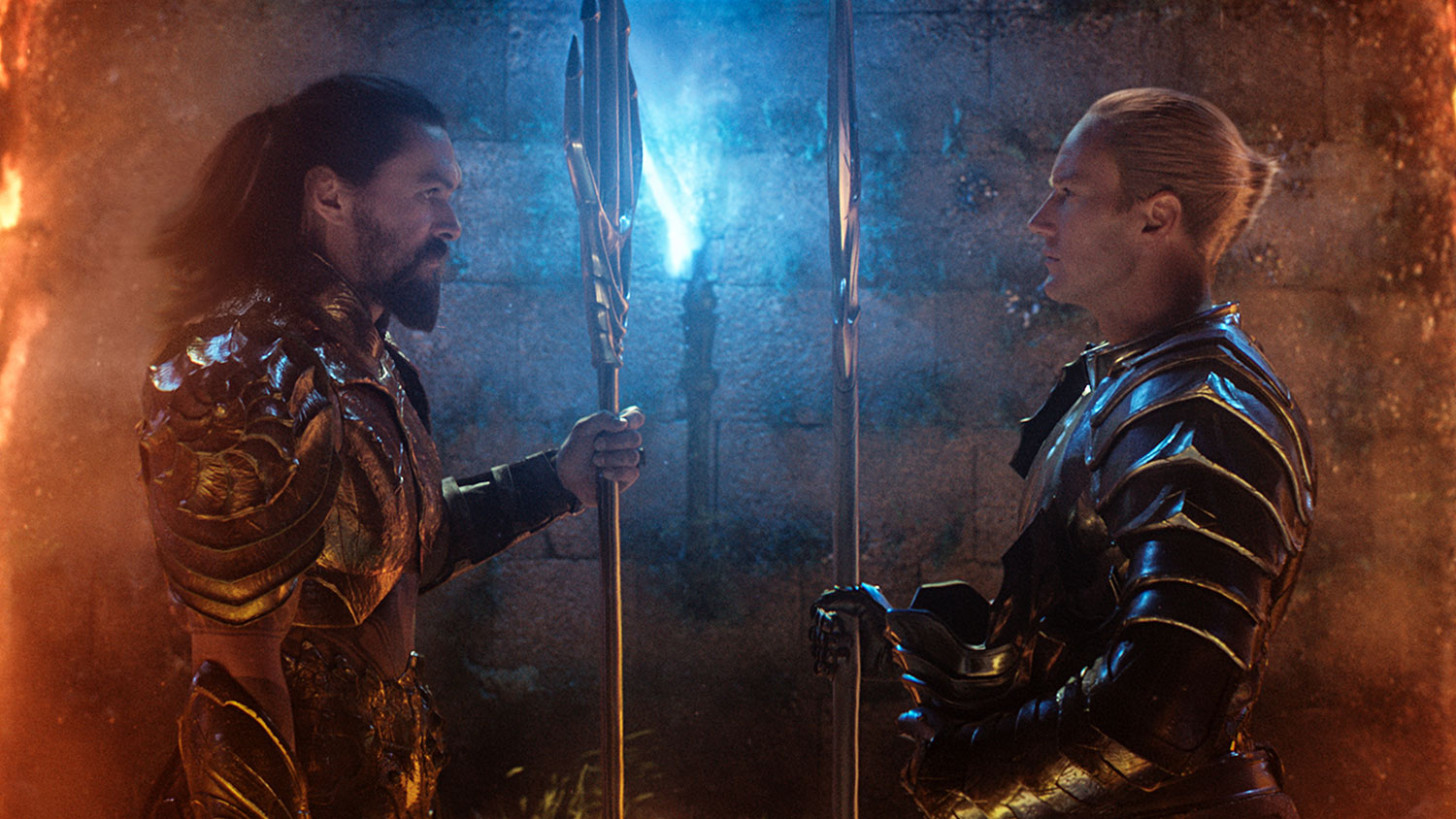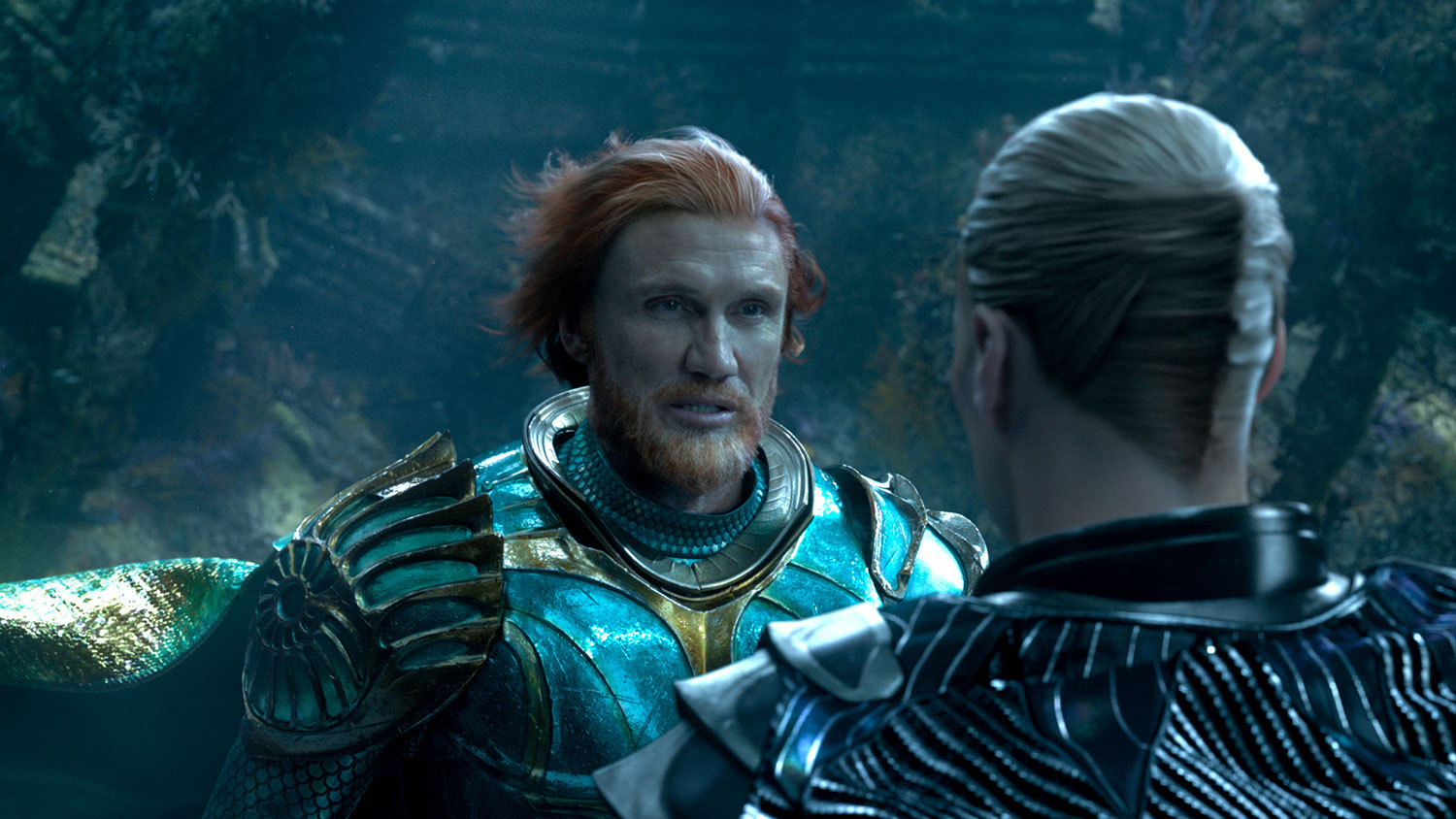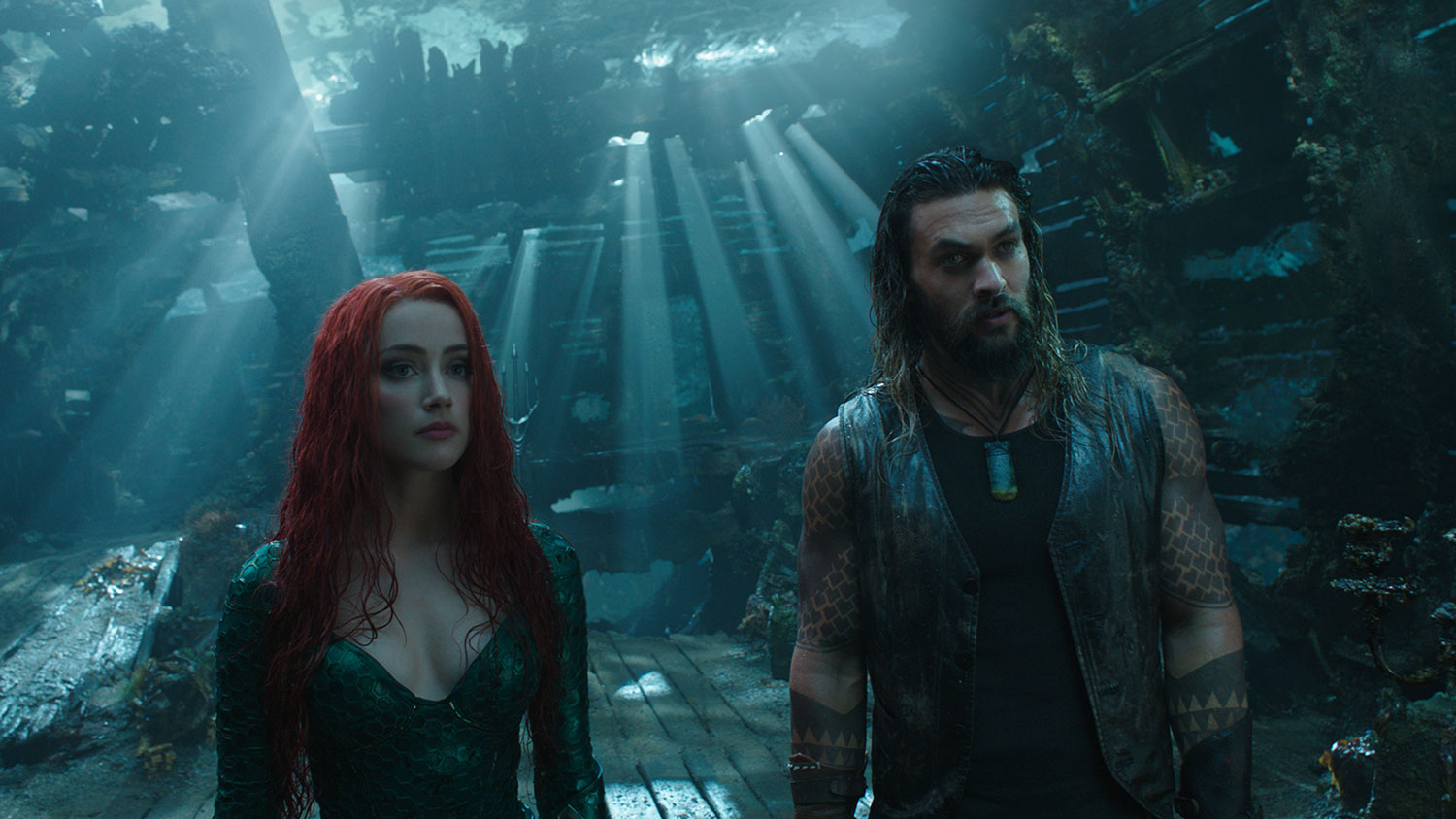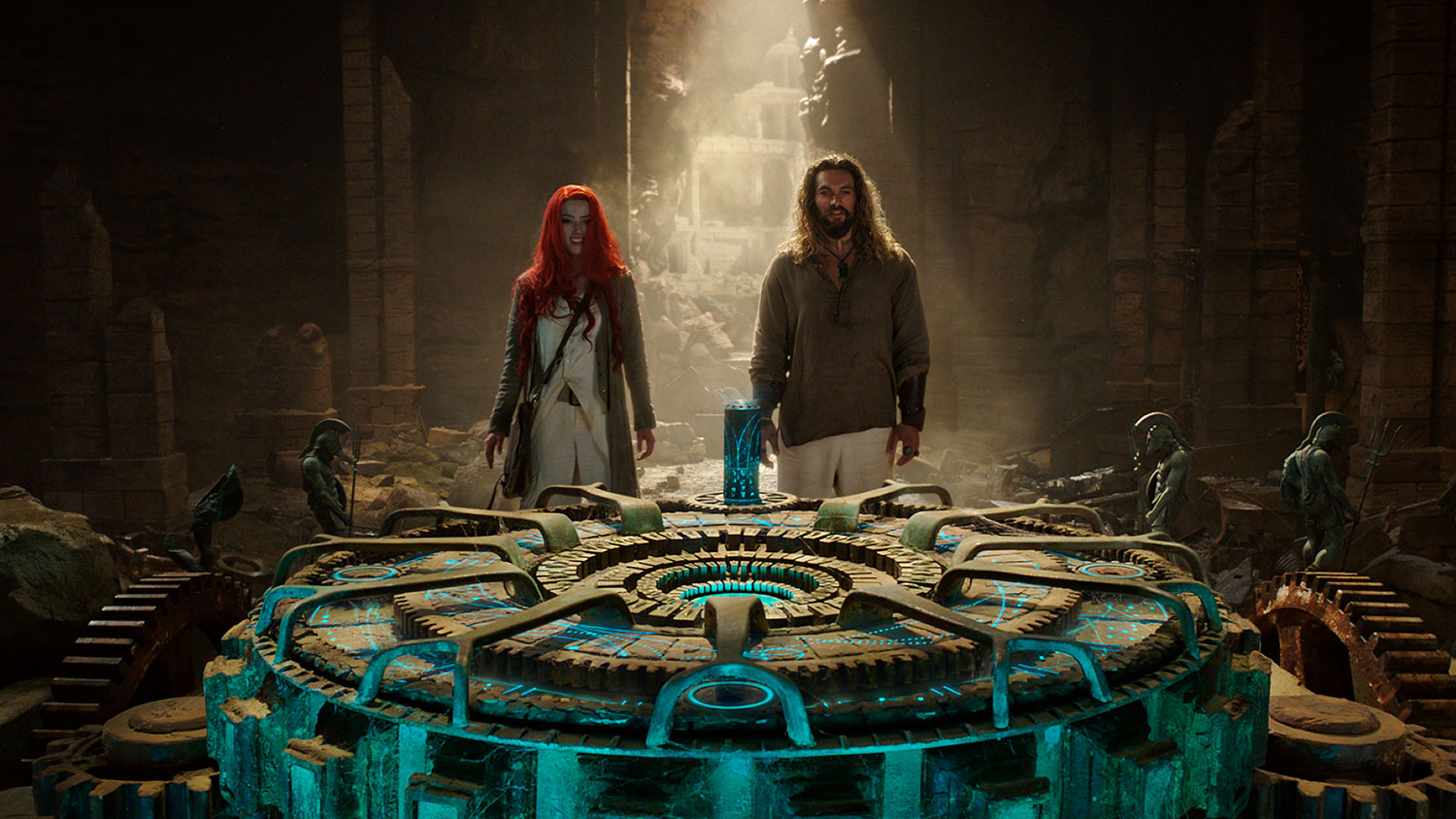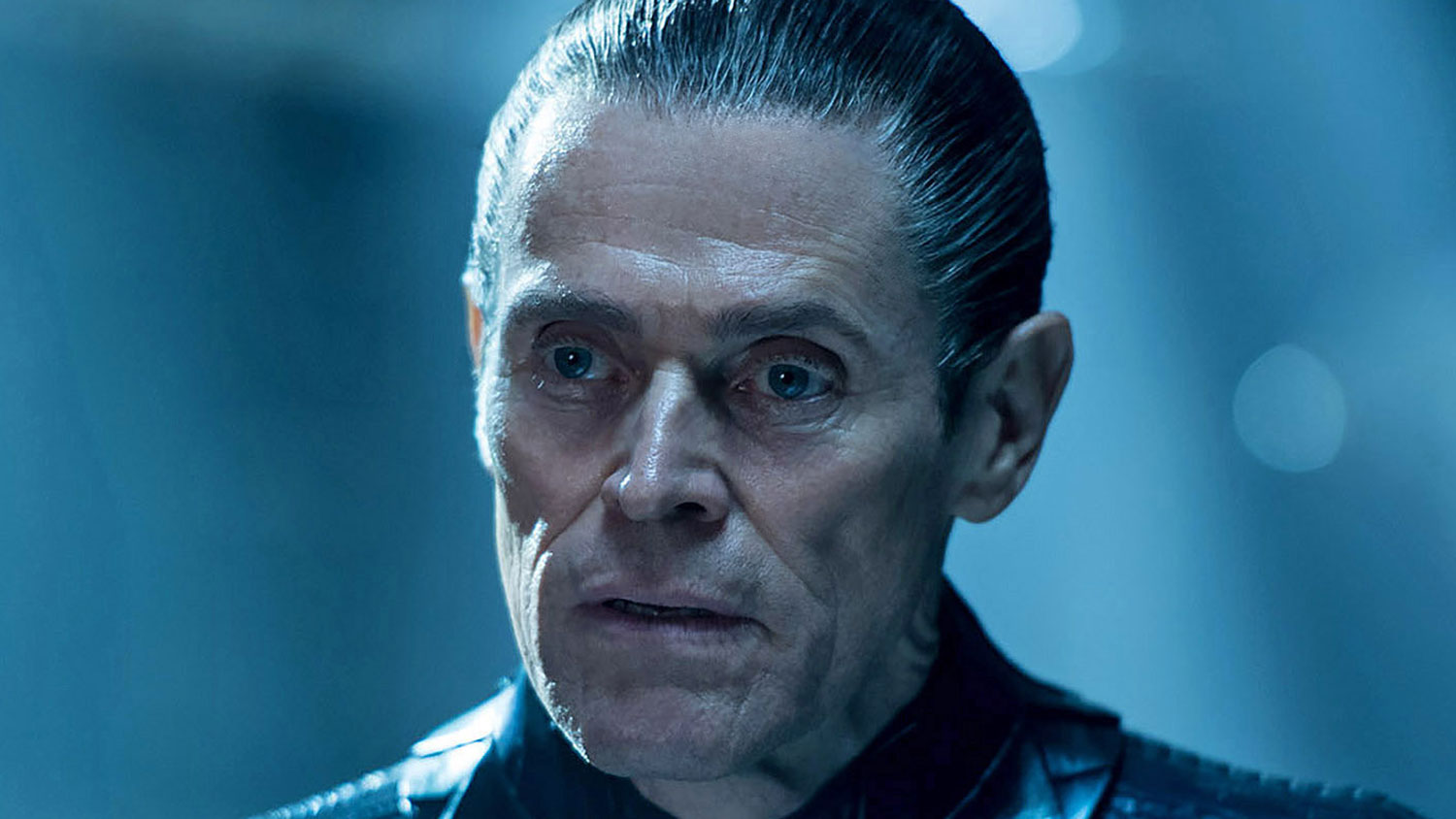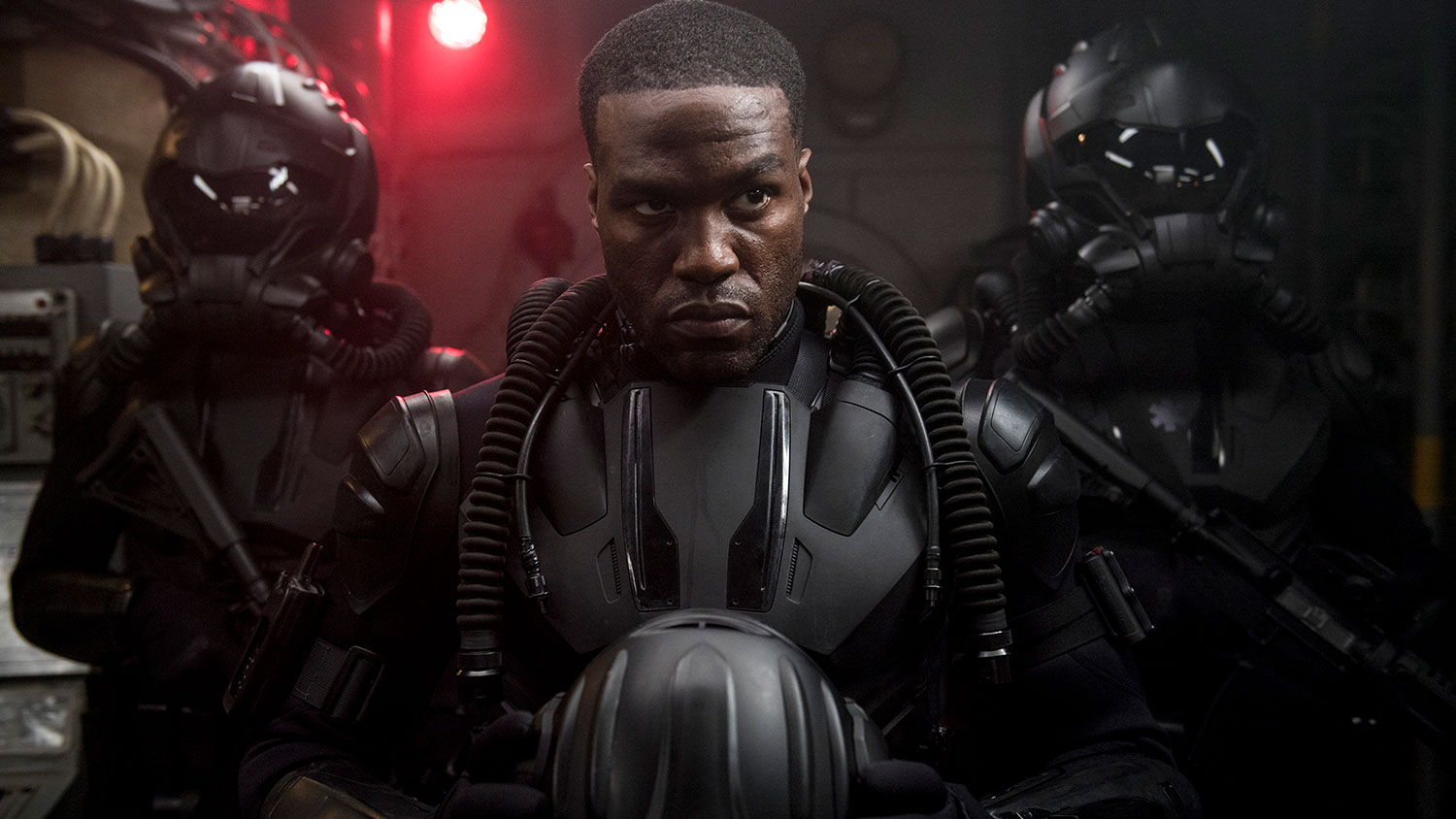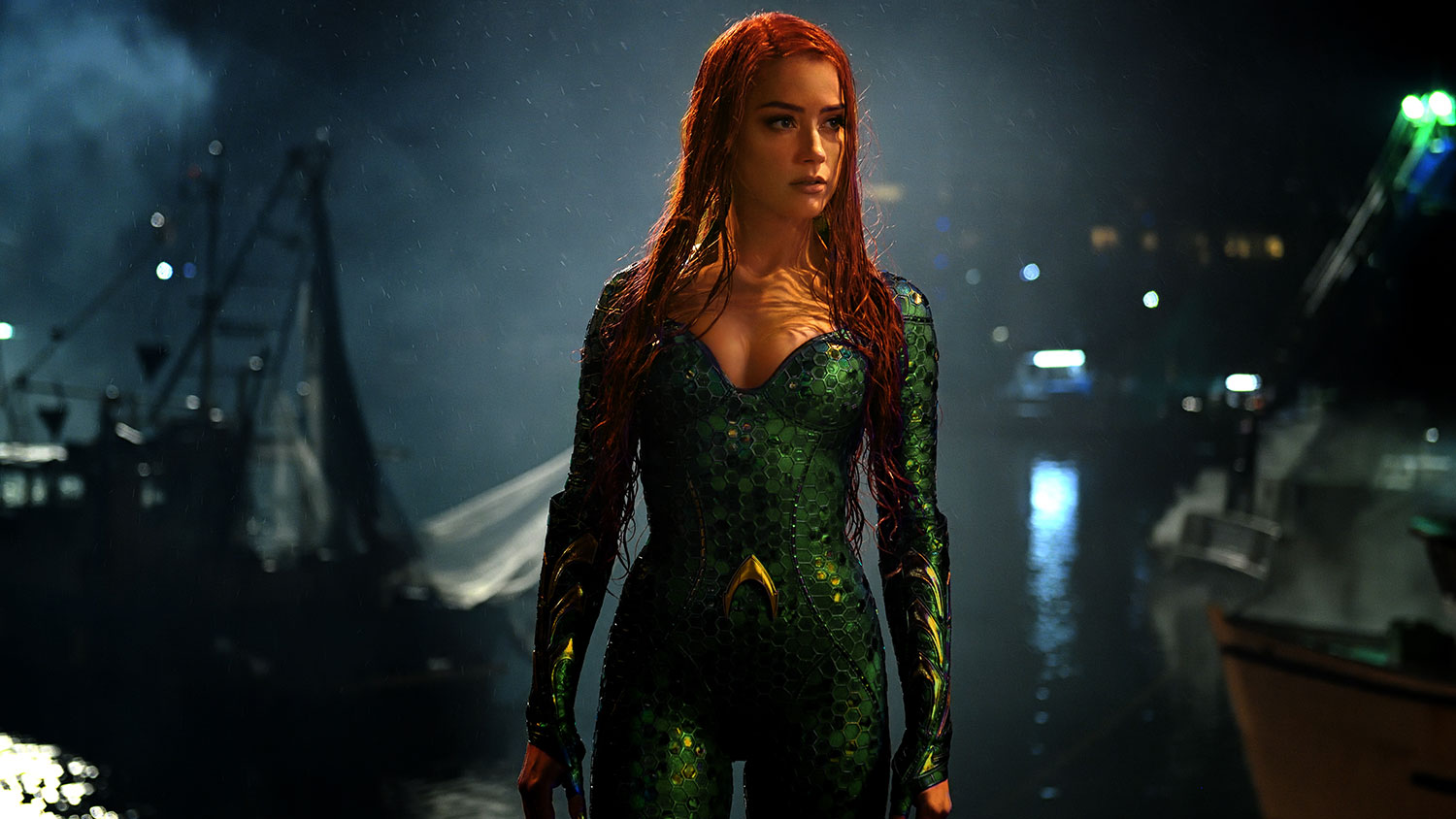Ten years ago, it would have seemed crazy to suggest Warner Bros. Pictures’ best hopes for its live-action cinematic universe based on DC Comics characters would depend on Wonder Woman and Aquaman — and yet, that’s where we are right now.
Recent Movie Reviews
- Spider-Man: Into the Spider-Verse
- Creed II
- Fantastic Beasts: The Crimes of Grindelwald
- Halloween
- First Man
Five big-budget films have yielded just one critical and commercial hit so far, with 2017’s Wonder Woman the only unqualified success in the interconnected franchise. That puts no small amount of pressure on Aquaman, the next solo superhero feature in the studio’s “DC Extended Universe,” to prove that Wonder Woman wasn’t a fluke and that there’s still plenty of potential in one of the comics world’s most popular collections of characters.
Fortunately, that’s exactly what Aquaman and director James Wan achieve with the oceanic hero, whose first solo feature doesn’t quite measure up to Wonder Woman but still provides an entertaining, exciting adventure full of absolutely stunning visual effects and impressive action.
Directed by Wan (The Conjuring, Furious 7) from a screenplay penned by David Leslie Johnson-McGoldrick (The Conjuring 2) and Will Beall (Gangster Squad), Aquaman casts Game of Thrones actor Jason Momoa as Arthur Curry, the child of Atlantean queen Atlanna (Nicole Kidman) and Thomas Curry (Temuera Morrison), a human lighthouse keeper. When the ruler of Atlantis, Orm (Patrick Wilson), attempts to unite the armies of the various undersea kingdoms to initiate a war with the surface-dwelling humans who have polluted the oceans, Arthur finds himself forced into action to stop Orm’s war by claiming the throne.
Over the course of his adventure — which spans locations around the world, both above sea level and miles below it — Arthur is assisted by Mera (Amber Heard), a princess with “hydrokinetic” abilities that allow her to manipulate water, and Vulko (Willem Dafoe), Arthur’s mentor and the counselor to the ruler of Atlantis. He’s also hunted by Black Manta (Yahya Abdul-Mateen II), a pirate and mercenary with a personal vendetta against Aquaman and a high-tech suit augmented with Atlantean technology.
The notion of making a movie in which the majority of the action occurs underwater was a risky proposition from the start. Not only does the aquatic nature of the film add a layer of difficulty to action sequences, but it complicates even the most basic elements of storytelling, from the way characters communicate to how they move. All of that early concern seems unnecessary in hindsight, though, as Wan and the film’s visual effects team make the narrative elements set underwater in Aquaman feel just as natural as what happens above sea level.
Wan and the film’s visual effects team make the narrative elements set underwater in Aquaman feel just as natural as what happens above sea level.
As for the film’s titular hero, Momoa picks up where he left off in Justice League and gives all of that swagger and devil-may-care attitude a fairly substantial back story this time around. Momoa’s portrayal of Aquaman was widely regarded as one of that film’s highlights — along with Gal Gadot and Ezra Miller’s performances as Wonder Woman and Flash, respectively — and the small sample size in that 2017 team-up film proves to be a fairly accurate representation of what an Aquaman solo feature offers.
To that end, anyone who wanted more of Momoa’s unique spin on the character in Justice League will probably find a lot to like in Aquaman, while anyone who reacted negatively to this iteration of Arthur Curry isn’t likely to have a change of heart before the credits roll.
In supporting roles, the film’s talented cast does a fine job of making the underwater acting and form-fitting costumes seem far less silly than they would have with less-invested actors. Heard, Wilson, and Dafoe are particularly fun to watch as they chew the underwater scenery in all the right ways; the talented cast keeps the drama intense enough to make the stakes feel high without tilting the film into camp, or making it so serious that it gets bogged down in the grim-and-gritty tone that plagued past DCEU films.
Abdul-Mateen II could very well be the film’s standout character, as his portrayal of Black Manta has all of the depth and memorable sequences that turn a supporting role into a fan-favorite character. A fight between Black Manta and Aquaman that unfolds across an Italian village in the film’s second act, for example, is particularly well shot and performed — both by the actors and the visual effects team supporting them — and ranks right up there among the fight scenes in any DCEU movie so far.
Sadly, that’s not to say that Aquaman is without some frustrating flaws.
Amid all of the outstanding visual elements of Aquaman, its unique aquatic aesthetic, and the entertaining performances from its cast, the final product still manages to feel a little hollow.
Much like some of the lesser-regarded entries in Marvel Studios’ cinematic universe — the first two Thor movies and the last two Iron Man movies are good examples — there’s a sense that something emotionally substantive is missing underneath all of the vivid visuals and explosive action. It’s an aspect of movies that’s difficult to define or describe, but it’s something that helped Wonder Woman resonate with audiences in ways the best superhero movies tend to do. That emotional core feels absent from Aquaman, and the film’s long-term success will likely depend on whether its breathtaking visuals and abundance of well-executed action can make up for what it’s missing.

Unlike Marvel Studios’ cinematic universe, the DCEU remains an experiment that has yielded dramatically mixed results so far. If there’s one thing that Aquaman makes certain, however, it’s that there’s good reason to continue that experiment.
There are flaws in James Wan and Jason Momoa’s adventure with DC Comics’ lord of the seas, but the film does enough things right — and finds such creative ways to do them — that it stands out in both the DCEU and in the superhero genre as a whole. It also serves as a nice reminder of the storytelling potential that remains untapped in the DCEU due to previous attempts to paint every character’s story with the same grim-and-gritty brush.
Warner Bros. Pictures took a big gamble on Aquaman, and although the final product isn’t a complete win, the film still pays off in big ways and achieves what many would have thought impossible a decade ago: It elevates Aquaman into the top tier of superheroes.
Editors' Recommendations
- What’s next for the DC Universe after Aquaman and the Lost Kingdom
- Jason Momoa and Patrick Wilson bro up in Aquaman 2’s first trailer
- All the DC Easter eggs in The Flash movie

